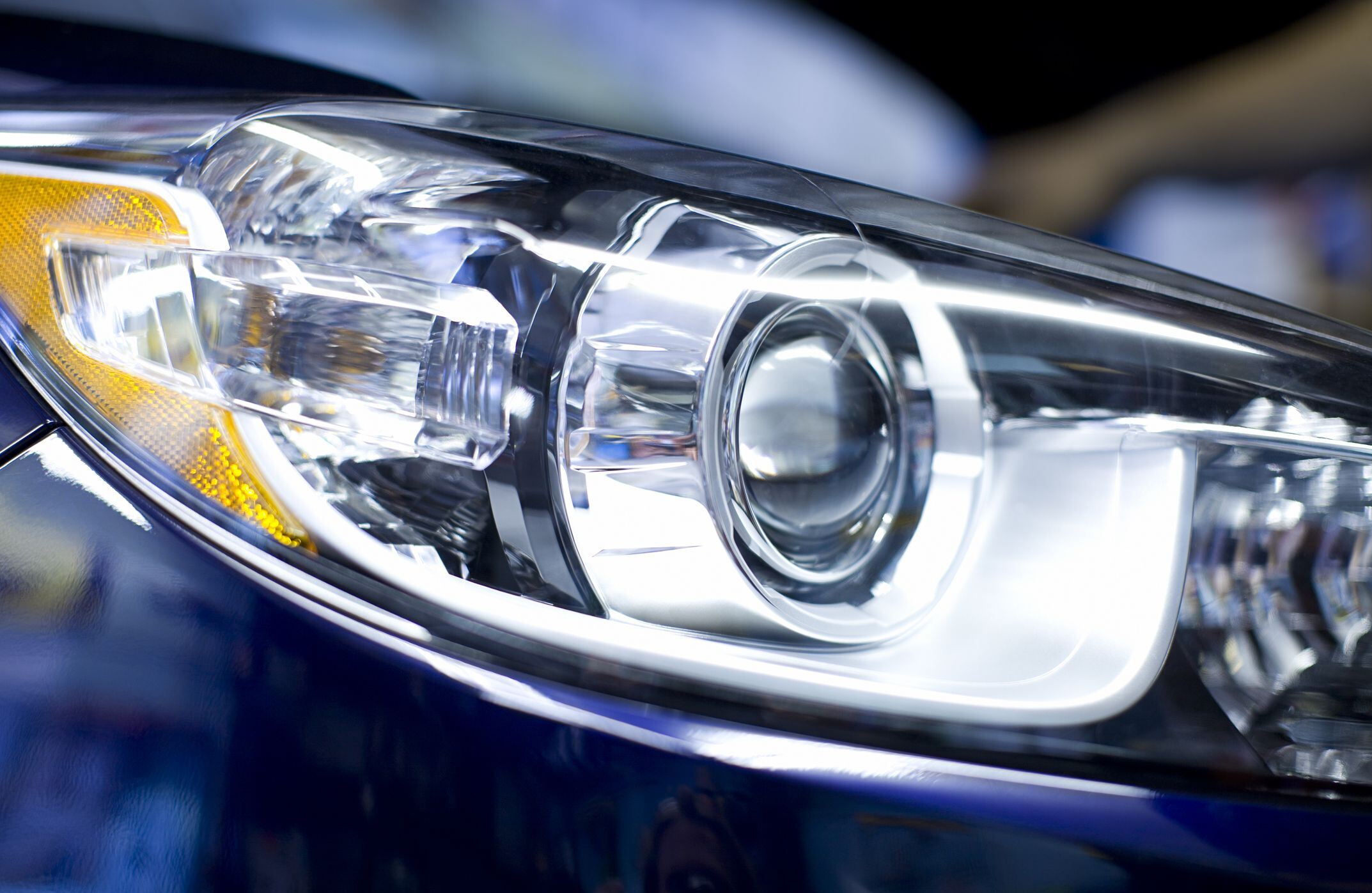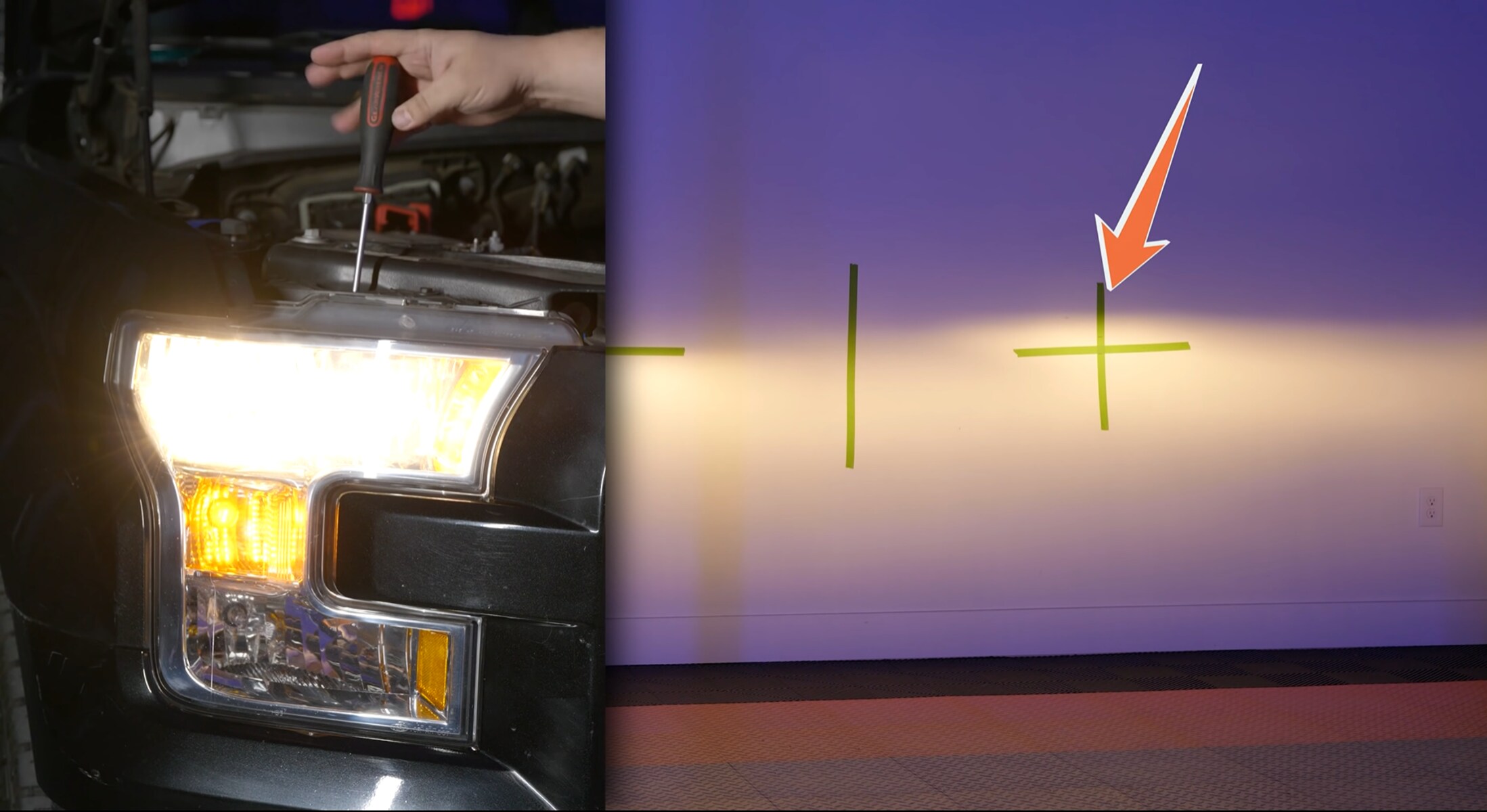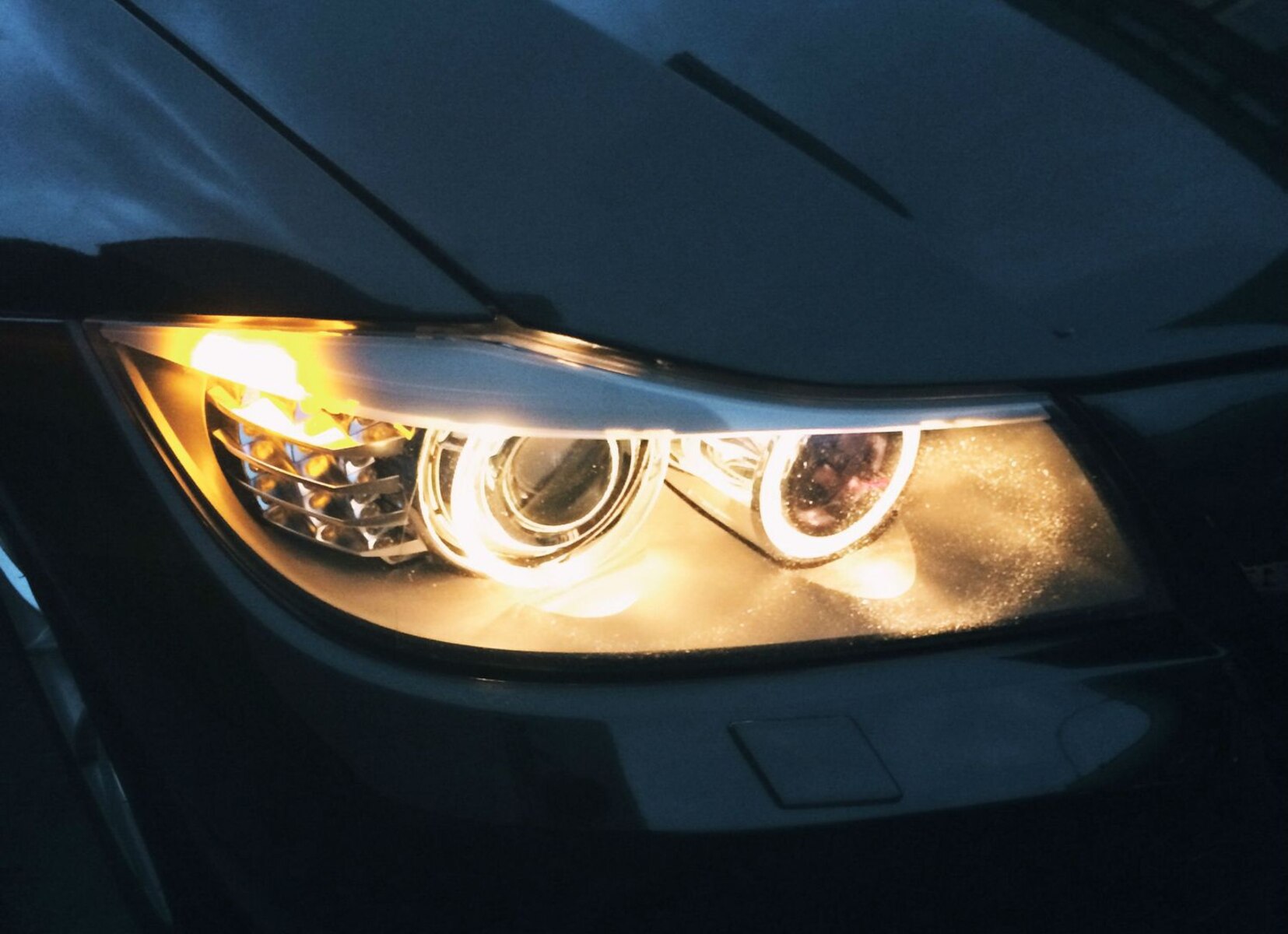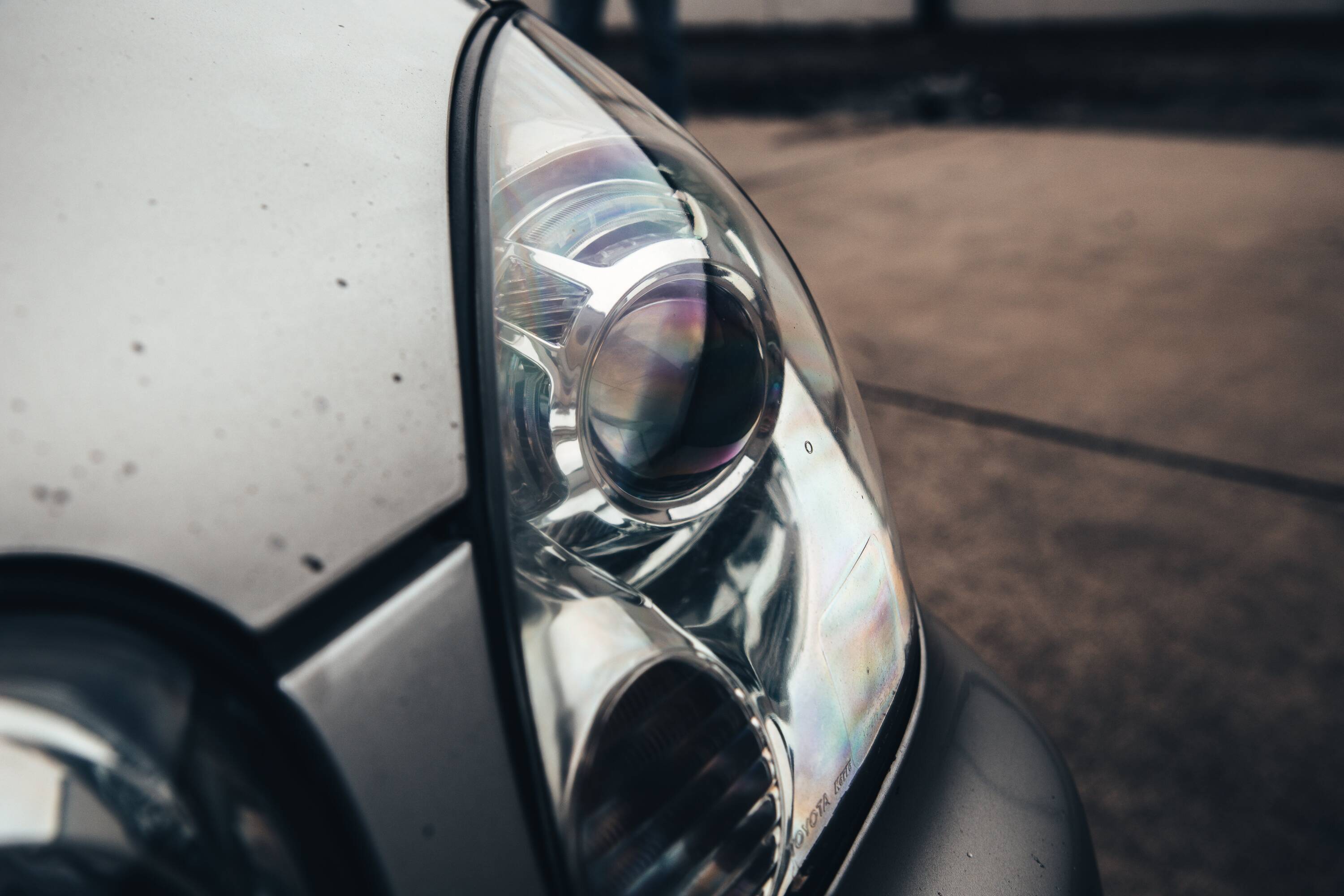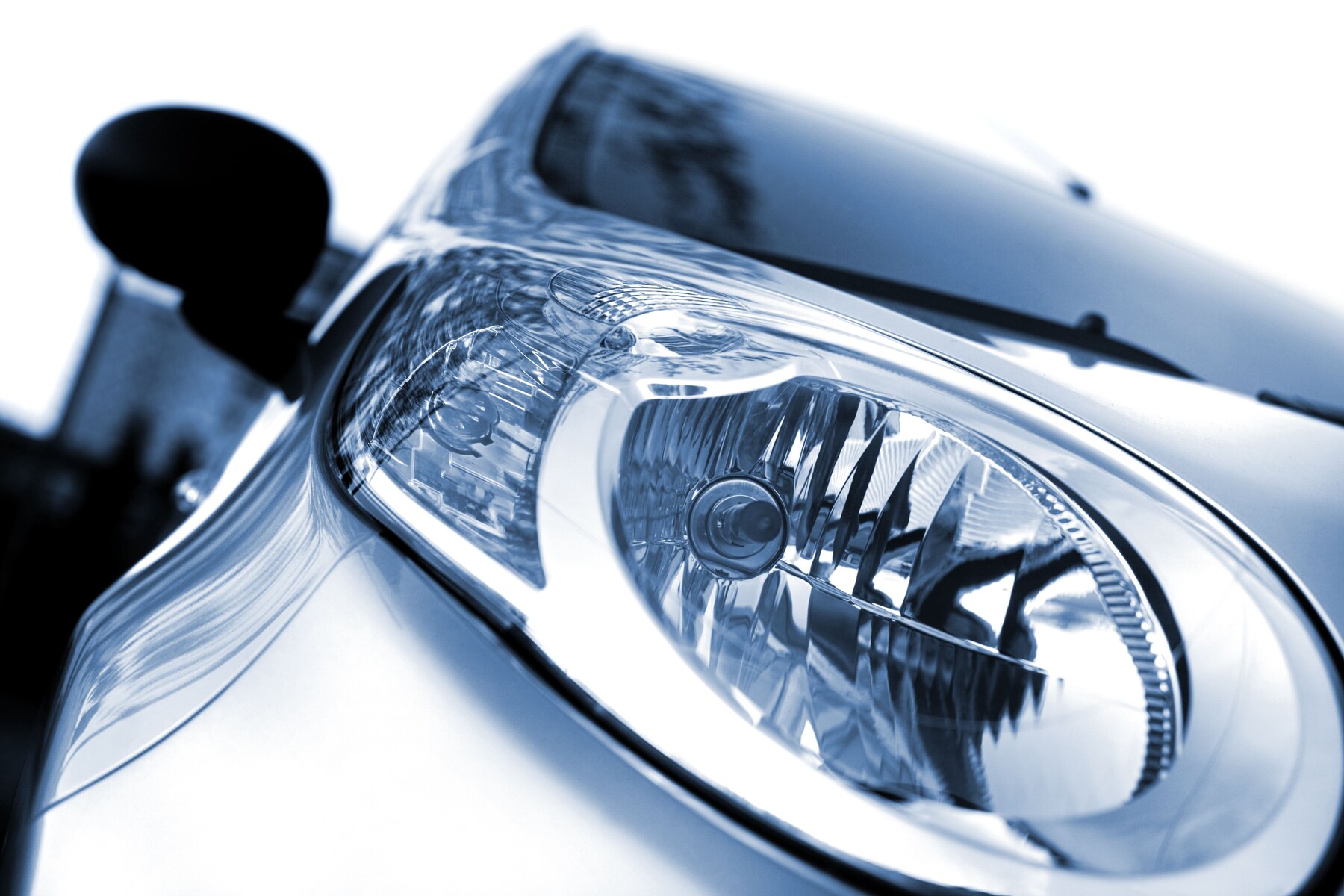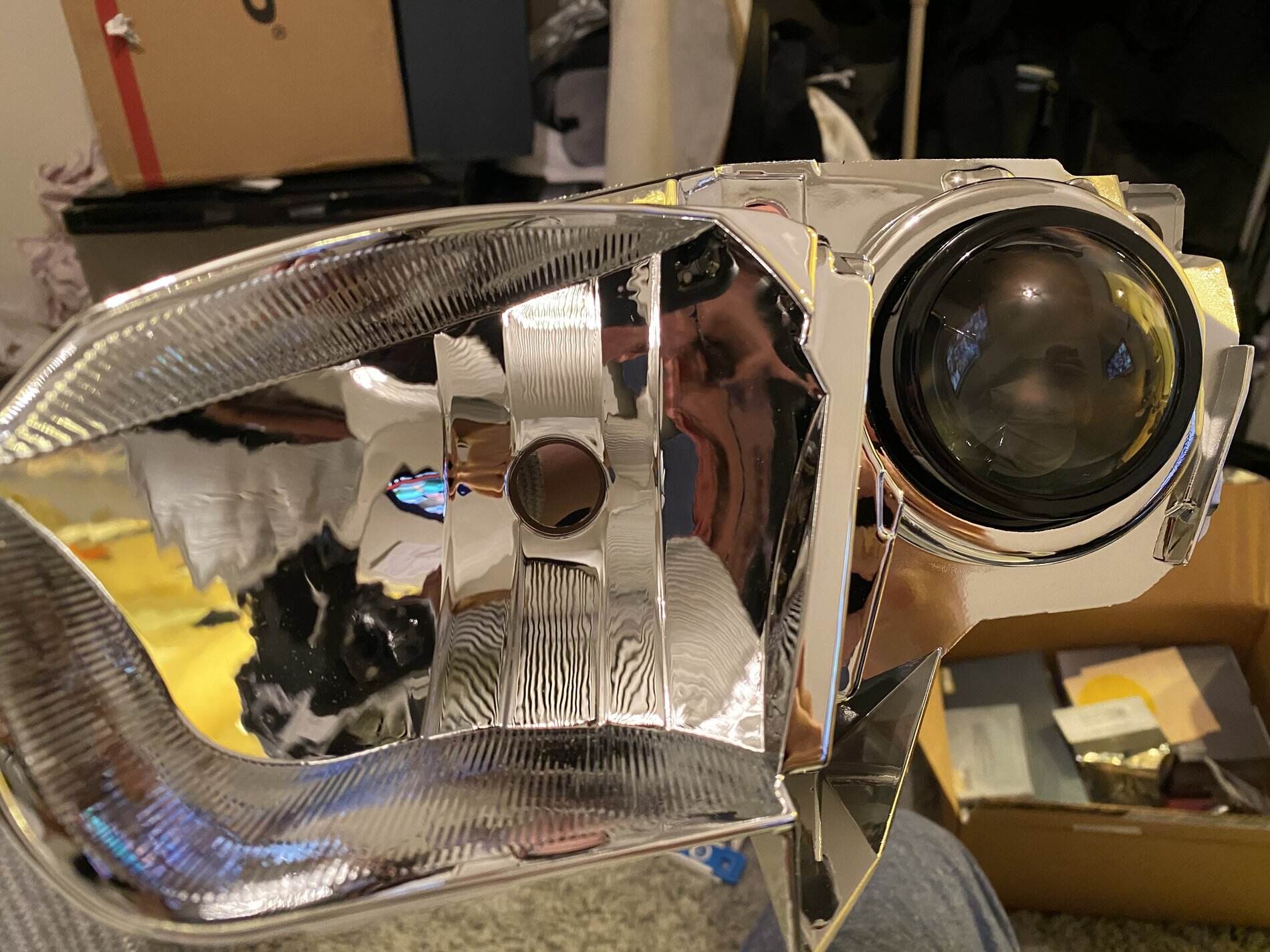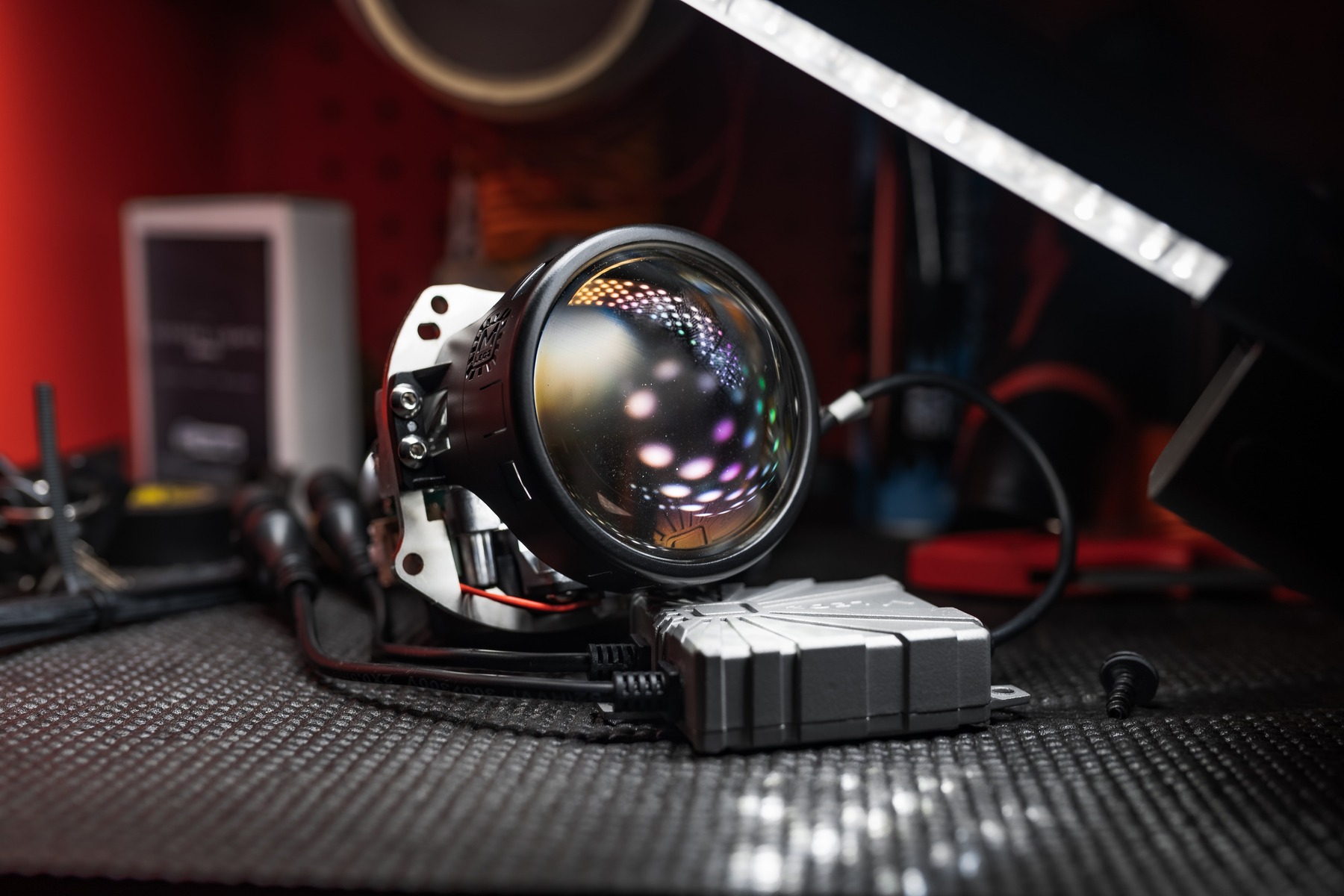Introduction
When it comes to automotive lighting, the right headlights can make all the difference in ensuring a safe and enjoyable driving experience. One popular option that many modern vehicles come equipped with is projector headlights. If you’re unsure whether your headlights are of the projector variety, this article will guide you on how to determine if you have projector headlights.
Projector headlights are a type of headlight system that utilizes a small, curved lens to produce a focused and controlled beam of light. Unlike traditional headlights, which disperse light in a scattered pattern, projector headlights provide a more precise and concentrated illumination. This can improve visibility and enhance safety, especially during nighttime driving or in adverse weather conditions.
Understanding how projector headlights work is essential in identifying whether your vehicle is equipped with this advanced lighting technology. Typically, a projector headlight consists of several components, including a bulb, a reflector, a lens, and a cutoff shield. The bulb generates the light, and the reflector helps direct the light towards the lens. The lens then works to shape and focus the light into a well-defined beam, and the cutoff shield ensures that the light is properly controlled and does not blind oncoming drivers.
There are several advantages to having projector headlights. Firstly, their focused beam pattern helps to increase visibility, allowing you to see more of the road ahead. This can greatly enhance safety, as it helps you detect potential hazards sooner and react accordingly. Additionally, projector headlights are often more efficient than traditional headlights, meaning they consume less energy and can potentially increase the lifespan of your vehicle’s battery.
However, like any lighting technology, projector headlights also have their drawbacks. One of the main disadvantages is cost. Projector headlights are typically more expensive to manufacture and replace compared to traditional headlights. Additionally, some drivers may find that the sharp cutoff line of the beam can limit peripheral vision, making it slightly more challenging to see objects outside the direct path of the light. This is a minor concern, but it’s worth being aware of.
What are projector headlights?
Projector headlights are a type of headlight system that provides a focused and controlled beam of light. They differ from traditional reflector headlights by using a small, curved lens to shape and direct the light. This results in a more precise and concentrated illumination, improving visibility and safety while driving.
The design of projector headlights allows for a sharper cutoff line in the beam pattern, which prevents excessive glare and reduces the risk of blinding oncoming drivers. This cutoff line ensures that the light is directed downwards and towards the road, minimizing distractions for other drivers and creating a more pleasant driving experience for all.
The lens in a projector headlight plays a crucial role in shaping the light. It is designed to distribute the light in a controlled manner, providing a well-defined and uniform beam pattern. This improves the driver’s visibility of the road ahead, helping to identify potential hazards and obstacles more quickly and effectively.
Another key component of projector headlights is the cutoff shield, also known as a shutter or mask. This shield helps to reduce glare by blocking and controlling the upper portion of the light beam. By restricting the upward projection of light, it prevents the light from illuminating the eyes of oncoming drivers, ensuring a safer and more comfortable driving environment for everyone on the road.
One of the benefits of projector headlights is their versatility. They can be used with various types of light sources, including halogen bulbs, high-intensity discharge (HID) lamps, or even LED lights. This flexibility allows manufacturers to incorporate projector headlights into a wide range of vehicles, ensuring that drivers have access to this advanced lighting technology regardless of their make and model.
Overall, projector headlights offer several advantages, such as improved visibility, reduced glare, and a more focused beam pattern. These benefits make them a popular choice among drivers looking for a safer and more efficient lighting option for their vehicles.
How do projector headlights work?
Projector headlights work by utilizing a combination of components to produce a focused and precise beam of light. Understanding how these components interact can help you appreciate the effectiveness of projector headlights compared to other types of headlights.
At the heart of a projector headlight is the bulb. This light source can be a halogen bulb, HID lamp, or LED. The bulb generates the illumination required to light up the road ahead.
Behind the bulb is a reflector, which helps to direct and shape the light emitted by the bulb. The reflector bounces the light towards a curved lens, which plays a crucial role in focusing the light into a well-defined beam.
As the light passes through the lens, it is shaped and controlled to provide optimal visibility. The lens is designed to distribute the light evenly and minimize scattering, resulting in a more concentrated and efficient beam pattern.
Inside the projector headlight assembly, there is also a cutoff shield. This shield is positioned at a precise angle to block the upper portion of the light beam and create a sharp cutoff line. The cutoff shield ensures that the light does not blind oncoming drivers or cause unnecessary glare.
Together, these components work harmoniously to create a focused and controlled beam of light. The projector headlight’s design allows for enhanced visibility by directing the light exactly where it is needed without excessively illuminating the surrounding areas or disturbing other drivers.
Projector headlights also have the advantage of adjustability. Some models feature a solenoid or motor that allows the headlight’s aim to be adjusted. This feature enables drivers to fine-tune the position of the beam, ensuring optimal visibility regardless of the road conditions or vehicle load.
In summary, projector headlights work by utilizing a bulb, reflector, lens, and cutoff shield to create a focused and controlled beam of light. By maximizing visibility and minimizing glare, projector headlights provide a safer and more efficient lighting option for drivers.
Advantages of projector headlights
Projector headlights offer several advantages over traditional headlights, making them a popular choice among drivers looking to enhance their visibility and safety on the road. Here are some of the key advantages of projector headlights:
1. Enhanced visibility: Projector headlights produce a focused and controlled beam of light that improves visibility compared to traditional headlights. The well-defined beam pattern allows for better illumination of the road ahead, making it easier to spot potential hazards and obstacles.
2. Reduced glare: The cutoff shield in projector headlights helps to minimize glare for oncoming drivers. By blocking the upper portion of the light beam, it prevents the light from directly entering their eyes. This not only improves their comfort but also reduces the risk of accidents caused by glare.
3. More efficient lighting: Projector headlights are known for their efficiency. They use less energy compared to traditional headlights, which can help prolong the lifespan of your vehicle’s battery. Additionally, their focused beam pattern ensures that the light is directed where it is needed, reducing wasted light and minimizing light pollution.
4. Sleek and modern appearance: Projector headlights have a sleek and stylish design that can give your vehicle a modern and high-end look. The clear and sharp cutoff line adds a touch of sophistication, making your car stand out on the road.
5. Compatibility with different light sources: Projector headlights are versatile and can be used with various types of light sources, including halogen bulbs, HID lamps, or LED lights. This flexibility allows drivers to choose the type of lighting that best suits their needs, whether it’s brightness, energy efficiency, or longevity.
6. Adjustable aim: Many projector headlights come with an adjustable aim feature, allowing you to fine-tune the position of the beam. This adjustability ensures optimal visibility, especially when driving on different types of roads or carrying varying loads.
Overall, the advantages of projector headlights make them a worthwhile upgrade for drivers seeking improved visibility, reduced glare, and a more efficient lighting solution for their vehicles.
Disadvantages of projector headlights
While projector headlights offer several benefits, it’s important to consider their potential drawbacks before making a decision. Here are some of the disadvantages of projector headlights:
1. Higher cost: One of the main disadvantages of projector headlights is their cost. The advanced technology and intricate design of these headlights often result in higher manufacturing and replacement expenses compared to traditional headlights. This can be a significant factor to consider, especially if you’re on a tight budget.
2. Restricted peripheral vision: The sharp cutoff line in the beam pattern of projector headlights can limit your peripheral vision. While it provides better focus on the road ahead, it may make it slightly more challenging to see objects outside the direct path of the light. This limitation can be overcome with cautious driving and utilizing other vehicle lighting features.
3. Complex installation: Installing projector headlights can be more complex compared to traditional headlights, which often have a straightforward plug-and-play design. Depending on your vehicle, additional wiring or modifications may be required to properly install and integrate projector headlights into the existing lighting system.
4. Availability for older vehicles: Projector headlights are a relatively newer technology, so they may not be readily available for older vehicles. Retrofitting older vehicles with projector headlights can be challenging and may require additional modifications to the headlight housing and wiring.
5. Limited aftermarket options: While projector headlights are becoming more popular, the availability of aftermarket options can still be limited compared to traditional headlights. This can make it more challenging to find the specific style or design you desire for your vehicle.
6. Potential alignment issues: If not properly installed or adjusted, projector headlights may experience alignment issues. Misaligned headlights can result in decreased visibility, inefficient lighting distribution, and potential glare for other drivers. Regular maintenance and proper alignment are necessary to ensure optimal performance.
Despite these disadvantages, projector headlights continue to be a popular choice for many drivers due to their enhanced visibility and stylish appearance. By considering these drawbacks, you can make an informed decision about whether projector headlights are the right choice for your vehicle.
How to tell if you have projector headlights?
Identifying whether your vehicle is equipped with projector headlights can be done through a few simple observations. Here are some ways to determine if your headlights are of the projector variety:
1. Check your vehicle’s user manual: The easiest way to determine if your vehicle has projector headlights is to consult the owner’s manual. The manual typically provides detailed information about the specifications and features of your vehicle, including the type of headlights used.
2. Look at the shape of the headlight lens: Projector headlights have a distinct lens shape. Unlike traditional headlights with a flat lens, projector headlights have a curved or bubble-like lens. The curvature of the lens is designed to help shape and focus the light, allowing for a more controlled and precise beam pattern.
3. Inspect the internal design of the headlight assembly: If you’re comfortable doing so, you can remove the headlight assembly to get a closer look at its internal components. Projector headlights typically have a bulb positioned at the center, surrounded by a reflector, lens, and cutoff shield. The reflector directs the light towards the lens, resulting in a more focused beam.
4. Look for a solenoid or motor inside the headlight: Some projector headlights have an adjustable aim feature. If your headlights have a solenoid or motor inside the housing, it indicates that they are projector headlights. This feature allows you to control the vertical aim of the light beam for improved visibility in various driving conditions.
5. Check your headlights at night: Projector headlights often produce a more focused and brighter beam of light compared to traditional headlights. When you turn on your headlights at night, observe the beam pattern. If it appears sharp, distinct, and well-controlled with a clear cutoff line, it is likely that you have projector headlights.
It’s important to note that while these methods can help you identify projector headlights, the only definitive way to confirm is by referring to your vehicle’s specifications or consulting a professional. Additionally, keep in mind that projector headlights are becoming more common in newer vehicles but may not be as prevalent in older models or certain car makes and models.
By using these methods, you can determine whether your vehicle is equipped with projector headlights, helping you understand and appreciate the lighting technology your vehicle has to offer.
Check your vehicle’s user manual
When trying to determine if your vehicle is equipped with projector headlights, one of the simplest and most reliable methods is to consult your vehicle’s user manual. The user manual provides detailed information about your vehicle’s specifications, including the type of headlights it is equipped with.
Locate your vehicle’s user manual, which is usually found in the glove compartment or provided in electronic form by the manufacturer. The user manual contains valuable information about various aspects of your vehicle, including its lighting system.
Flip through the manual to the section that discusses the headlights or lighting system. Look for any mentions of projector headlights or any specific headlight terminology that could indicate their presence. The user manual may refer to them as “projector beam headlights” or a similar term.
If your vehicle is equipped with projector headlights, the user manual will typically provide information on their features, maintenance, and any specific instructions related to adjusting or replacing the headlights.
In some cases, the user manual may not explicitly state whether your vehicle has projector headlights. Instead, it may provide details about the specific headlight bulb type or assembly used. With this information, you can cross-reference it with other sources or indications to confirm if projector headlights are installed.
Checking your vehicle’s user manual is a quick and reliable way to determine if you have projector headlights. The manual provides accurate and specific information directly from the manufacturer, ensuring you have the correct details about your vehicle’s lighting system.
If you no longer have access to the user manual or are unable to find the relevant information, you can consult the manufacturer’s website or reach out to a dealership that specializes in your vehicle’s make and model. They will be able to provide accurate information about the lighting system and confirm if your vehicle has projector headlights.
By referring to the user manual or reaching out to the manufacturer, you can confidently identify the type of headlights your vehicle is equipped with and gain a better understanding of the lighting technology that enhances your driving experience.
Look at the shape of the headlight lens
Another way to determine if your vehicle has projector headlights is by examining the shape of the headlight lens. Projector headlights typically have a distinct lens shape that sets them apart from traditional headlights.
Observe the front of your vehicle and focus on the headlights. Take note of the shape of the lens. Traditional headlights usually have a flat lens that covers the entire front face of the headlight assembly, while projector headlights have a curved or bubble-like lens.
The curved shape of the lens in projector headlights is designed to help shape and focus the light emitted from the bulb. This curvature allows for better control and precision in directing the light, resulting in a more focused and controlled beam pattern.
If you notice that the headlight lens on your vehicle has a curved or bubble-like shape, it is a strong indication that you have projector headlights. This design feature is distinctive and allows projector headlights to produce a sharper and more defined beam of light compared to traditional headlights.
It’s important to keep in mind that not all curved lens headlights are projector headlights. Some vehicles may have high-intensity discharge (HID) or LED headlights with curved lenses but still use a reflector design instead of a projector setup. However, the curved lens is a good starting point in identifying the possibility of projector headlights.
If you are still uncertain about the type of headlights your vehicle has after inspecting the lens shape, consider combining this observation with other methods, such as consulting your vehicle’s user manual or seeking professional assistance. These additional steps can help confirm whether your vehicle is indeed equipped with projector headlights.
By examining the shape of the headlight lens, you can gain valuable insights into the type of headlights your vehicle possesses. Whether it’s the distinctive curved lens of projector headlights or another design element, this visual observation can assist you in determining the lighting technology employed in your vehicle.
Inspect the internal design of the headlight assembly
Another method to determine if your vehicle has projector headlights is by examining the internal design of the headlight assembly. By taking a closer look at the components inside the headlight, you can identify the presence of projector technology.
If you feel comfortable doing so, you can remove the headlight assembly from your vehicle following the manufacturer’s instructions or by seeking professional assistance. With the headlight assembly in hand, carefully examine the internal components.
Projector headlights typically consist of several key components, including a bulb, a reflector, a lens, and a cutoff shield. The reflector aids in directing the light generated by the bulb towards the lens.
Look for a bulb positioned at the center of the headlight assembly. This central placement of the bulb is a common characteristic of projector headlights. Traditional headlights, on the other hand, may have the bulb located either on the top or at the bottom of the assembly.
Inspect the lens and observe its shape and construction. The lens in projector headlights is designed to shape and focus the light, often featuring a curved surface. This curvature allows for better control and distribution of the light, resulting in a more precise and focused beam pattern.
An additional component to look for is the cutoff shield, also known as a shutter or mask. The cutoff shield is positioned inside the headlight assembly and helps restrict the upward projection of light. It ensures that the light is properly controlled and does not blind oncoming drivers.
If you notice these components, such as the centrally placed bulb, a lens with a curved shape, and a cutoff shield, it is a strong indication that your vehicle is equipped with projector headlights.
It’s important to note that not all headlight assemblies with these components are projector headlights. Some vehicles may have other types of headlights, such as HID or LED, which also incorporate similar components in their design.
If you are uncertain about the internal components or feel unsure about removing the headlight assembly, consult your vehicle’s user manual or consider seeking assistance from a professional mechanic or dealership. They can provide expert insight and confirm if your vehicle indeed has projector headlights.
By inspecting the internal design of the headlight assembly, you can gather valuable clues about the type of headlights your vehicle is equipped with. This observation coupled with other methods can help you confidently identify the lighting technology in your vehicle.
Look for a solenoid or motor inside the headlight
Another way to determine if your vehicle has projector headlights is by examining the internal components of the headlight assembly, specifically looking for a solenoid or motor. This feature is often present in projector headlights and indicates the ability to adjust the aim of the headlight beam.
Inspect the headlight assembly and look for any additional components inside. A solenoid or motor is typically located near the back of the assembly, close to the bulb or reflector. It may be visible as a small device or mechanism.
The presence of a solenoid or motor suggests that your headlights have an adjustable aim feature. This feature allows you to control the vertical aim of the headlight beam, enabling you to adapt the lighting to different road conditions and vehicle loads.
Projector headlights with an adjustable aim feature provide added flexibility and convenience. By adjusting the aim, you can ensure optimal visibility and minimize the risk of blinding oncoming drivers, especially when driving uphill or carrying heavy loads.
However, it’s important to note that not all projector headlights have adjustable aim capabilities. Some vehicles may have projector headlights without this feature, while others may offer it as an optional or premium feature.
If you’re uncertain about whether your headlights have a solenoid or motor, consult your vehicle’s user manual or reach out to the manufacturer or a professional mechanic. They can provide accurate information specific to your make and model and confirm if your vehicle is equipped with projector headlights with an adjustable aim feature.
In some cases, the solenoid or motor may not be visible from the outside. It may be located inside the headlight assembly or accessible only by removing certain components. If you’re uncomfortable with disassembling the headlight assembly, it’s recommended to seek assistance from a professional.
By looking for a solenoid or motor inside the headlight assembly, you can identify whether your vehicle has projector headlights with an adjustable aim feature. This observation can help you understand the lighting technology incorporated into your vehicle and make informed decisions about headlight adjustments for optimal visibility.
Check your headlights at night
An effective way to determine if your vehicle has projector headlights is to inspect your headlights at night when they are in use. This method allows you to observe the beam pattern and characteristics of your headlights firsthand.
Find a safe and dark location, such as an empty parking lot or a quiet street, to park your vehicle and turn on the headlights.
Observe the beam pattern produced by your headlights. Projector headlights typically create a well-defined and focused beam of light. The light beam should appear sharp, distinct, and have a clear cutoff line, which means the light is directed downward and does not excessively blind oncoming drivers.
Projector headlights produce a more precisely controlled beam compared to traditional headlights. The beam pattern has a narrower spread and is designed to illuminate the road ahead without causing unnecessary glare or lighting up the surrounding areas excessively.
If the beam pattern appears sharp and defined, with a distinct cutoff line, it suggests that your vehicle is equipped with projector headlights. This type of beam pattern indicates that the light is being projected through the lens and reflector system of projector headlights.
On the other hand, if the beam pattern appears scattered or diffused without a clear cutoff line, it is likely that your vehicle has traditional reflector headlights.
Keep in mind that some vehicles may have adaptive or dynamic headlights, which can change their beam pattern based on various factors like vehicle speed and steering input. These headlights may mimic the sharp cutoff line of projector headlights. To confirm the type of headlights your vehicle has, refer to your user manual or consult with a professional.
Checking your headlights at night is an empirical way to assess their characteristics and beam pattern. By observing the sharpness and control of the beam, you can gain valuable insights into the type of headlights your vehicle possesses.
If you’re uncertain about interpreting the results or want to confirm your findings, you can refer to your vehicle’s user manual, reach out to the manufacturer, or seek assistance from a professional mechanic. They can provide accurate information based on your make and model, ensuring a precise identification of your headlight type.
By checking your headlights at night, you can make an informed determination of whether your vehicle is equipped with projector headlights and gain a better understanding of the lighting technology in your vehicle.
Conclusion
Determining whether your vehicle has projector headlights can be done through a variety of methods, including checking the user manual, examining the headlight lens shape, inspecting the internal components, looking for a solenoid or motor, and observing the beam pattern at night. These methods, used individually or in combination, can help you confidently identify the type of headlights your vehicle is equipped with.
Projector headlights offer several advantages over traditional headlights, including enhanced visibility, reduced glare, more efficient lighting, a modern appearance, compatibility with different light sources, and adjustable aim. However, they do have some disadvantages to consider, including higher costs, restricted peripheral vision, complexity in installation, limited aftermarket options, and potential alignment issues.
By understanding and recognizing the features and characteristics of projector headlights, you can make informed decisions about the lighting technology in your vehicle. Whether your vehicle has projector headlights or another type, prioritizing proper maintenance and alignment is essential to ensure optimal visibility and safety on the road.
If you’re still unsure about the type of headlights your vehicle has or have specific questions, it is always recommended to consult your vehicle’s user manual, reach out to the manufacturer, or seek assistance from a professional mechanic. They can provide accurate and detailed information specific to your vehicle, ensuring that all your queries are resolved.
Having a clear understanding of the type of headlights in your vehicle allows you to appreciate the lighting technology and make informed decisions about upgrades, replacements, and adjustments to improve your overall driving experience. Whether you have projector headlights or another type, prioritize safety and ensure your headlights are properly maintained and aligned for optimal visibility on the road.







